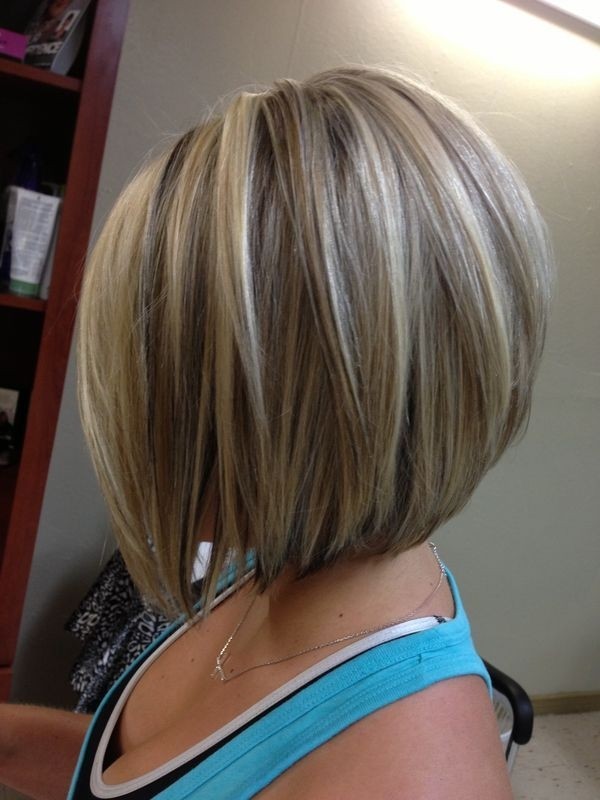 30 Popular Stacked Aline Bob Hairstyles for Women Styles Weeklyhttp://stylesweekly.com/wp-content/uploads/2014/12/Stacked-Bob-Hairstyles-Pictures.jpg
30 Popular Stacked Aline Bob Hairstyles for Women Styles Weeklyhttp://stylesweekly.com/wp-content/uploads/2014/12/Stacked-Bob-Hairstyles-Pictures.jpg
Bob Hairstyles Haircuts
A hairstyle, hairdo, or haircut refers to the styling of locks, on the individuals scalp usually. Sometimes, this may imply an editing of beard scalp also. The fashioning of hair can be viewed as an aspect of personal grooming, fashion, and cosmetics, although practical, cultural, and popular considerations also influence some hairstyles. The oldest known depiction of hair braiding dates back about 30,000 years. In historic civilizations, women's hair was often elaborately and carefully dressed in special ways. In Imperial Rome, women wore their head of hair in complicated styles. From the time of the Roman Empire[citation needed] before Middle Ages, many women grew their hair as long as it would grow obviously. During the Roman Empire as well as in the 16th century in the western world, women began to wear their hair in ornate styles extremely. Within the later half of the 15th century and on in to the 16th century a very high hairline on the forehead was considered attractive. During the 15th and 16th centuries, Western european men wore their hair cropped no longer than shoulder-length. In the first 17th century male hairstyles grew longer, with curls or waves being considered desirable.
The male wig was pioneered by Ruler Louis XIII of France (1601-1643) in 1624. Perukes or periwigs for men were released in to the English-speaking world with other French styles in 1660. 17th-century wigs were very long and wavy late, but became shorter in the mid-18th century, by which time these were normally white. Short hair for fashionable men was something of the Neoclassical movement. In the first 19th century the guy beard, and moustaches and sideburns also, made a strong reappearance. From your 16th to the 19th hundred years, European women's scalp became more noticeable while their locks coverings grew smaller. In the center of the 18th hundred years the pouf style developed. Through the First World Warfare, women around the world started to shift to shorter hairstyles that were simpler to manage. In the early 1950s women's hair was generally curled and worn in a number of styles and lengths. In the 1960s, many women started out to wear their locks in short modern cuts such as the pixie cut, within the 1970s, head of hair tended to be longer and looser. In both the 1960s and 1970s a lot of men and women wore their wild hair very right and long. In the 1980s, women pulled back their hair with scrunchies. Through the 1980s, punk hairstyles were implemented by some sociable people.
Throughout times, people have worn their wild hair in a wide variety of styles, largely determined by the fashions of the culture they live in. Hairstyles are markers and signifiers of social class, age, marital status, racial identification, political beliefs, and attitudes about gender.
In many ethnicities, often for religious reasons, women's mane is covered while in public areas, and in a few, such as Haredi Judaism or Western Orthodox communities, women's mane is shaved or trim very short, and covered with wigs.Only because the end of World Conflict I've women started to wear their hair short and in rather natural styles.
Paleolithic
- The oldest known reproduction of scalp braiding lies again about 30,000 years: the Venus of Willendorf, known in academia as the Woman of Willendorf now, of a female figurine from the Paleolithic, approximated to get been made between about 28,000 and 25,000 BCE.The Venus of Brassempouy counts about 25,000 yrs . old and indisputably shows hairstyling.
Bronze Age
- In Bronze Time razors were known and in use by some men, however, not on a regular basis since the method was rather annoying and required resharpening of the tool which reduced its strength.
Ancient history
- In historical civilizations, women's locks was often elaborately and carefully dressed up in special ways. Women colored their wild hair, curled it, and pinned it up (ponytail) in many ways. They place their wild hair in waves and curls using damp clay, that they dried in the sun and combed out then, or else by using a jelly manufactured from quince seed products soaked in normal water, or styling tongs and styling irons of various kinds.
Roman Empire and Middle Ages
- Between 27 BC and 102 Advertising, in Imperial Rome, women used their mane in complicated styles: a mass of curls at the top, or in rows of waves, attracted back into ringlets or braids. Eventually noblewomen's hairstyles grew so complex that they required daily attention from several slaves and a stylist to become maintained. The mane was often lightened using timber ash, unslaked lime and sodium bicarbonate, or darkened with copper filings, oak-apples or leeches marinated in vinegar and wine beverages. It was augmented by wigs, pads and hairpieces, and held in place by nets, pins, combs and pomade. Beneath the Byzantine Empire, noblewomen covered almost all of their hair with silk caps and pearl nets.
Best Hair Styles For Short Hair Women
- It is vital to choose the best short hairstyles for ladies since it plays a huge part of your look. Having the right hairstyle provides you with joy and positive emotions. Find out which hairstyle is ideal for your character and personality. You should check with your hairstylist before having a new haircut also. After all, changes are great and it can also add positive outlook in your life. Feel absolve to browse our collection of short hairstyles for ladies and choose the the one which your like best.
Bob Hairstyles: Top Bobs of 2012 Hairstyle Again
 http://www.hairstyleagain.com/wp-content/uploads/2011/12/2012-Inverted-bob-hairstyle1.jpg
http://www.hairstyleagain.com/wp-content/uploads/2011/12/2012-Inverted-bob-hairstyle1.jpgChic short bob haircuts8
 http://www.hhairstyle.com/wp-content/uploads/2012/09/Chic-short-bob-haircuts8.jpg
http://www.hhairstyle.com/wp-content/uploads/2012/09/Chic-short-bob-haircuts8.jpgAngled Bob Hairstyles Beautiful Hairstyles
 http://www.beautifulhairstyle.net/wp-content/uploads/2014/01/Hairstyles-Angled-Bob.jpg
http://www.beautifulhairstyle.net/wp-content/uploads/2014/01/Hairstyles-Angled-Bob.jpgBob haircuts : News BlogrollCenter
 http://www.blogrollcenter.com/news/gallery/bob-haircuts/bob_haircuts_3.jpg
http://www.blogrollcenter.com/news/gallery/bob-haircuts/bob_haircuts_3.jpgOIP.M66bfcc4b2a1515e1bcb99900d06adfbfH0
4461A28F336FC48ADCB234E4873E824763BA5959D3http://stylesweekly.com/30-popular-stacked-line-bob-hairstyles-women/
Embed Our image to your website
ThumbnailImageEmbed Our image to a Forum
ThumbnailImage








.jpg)
.jpg)

